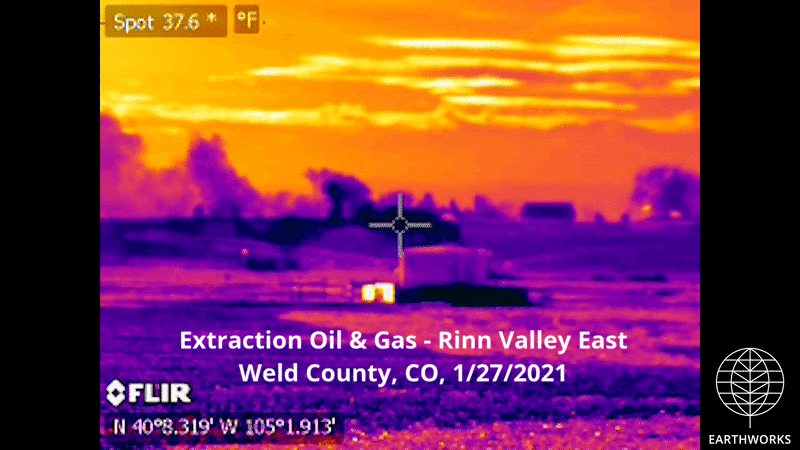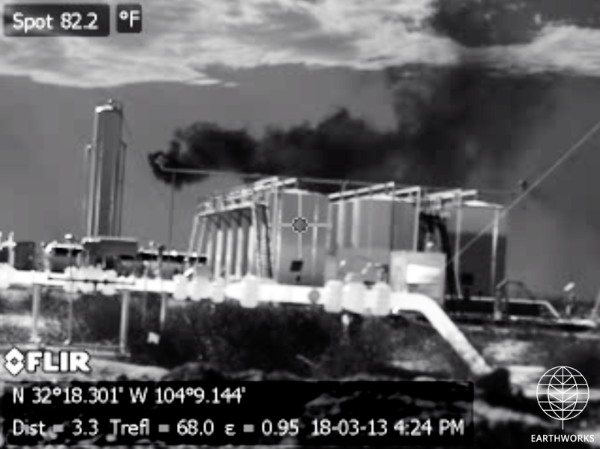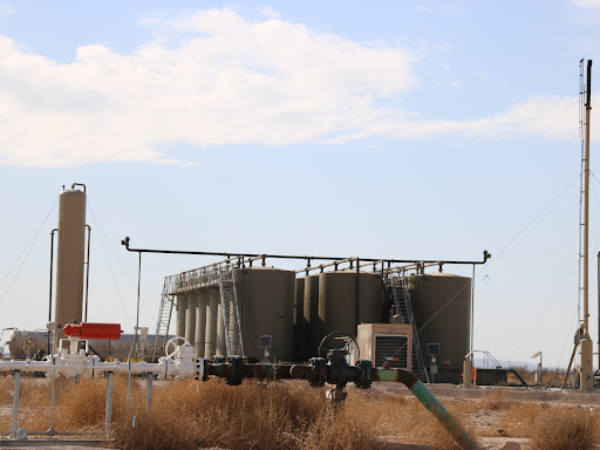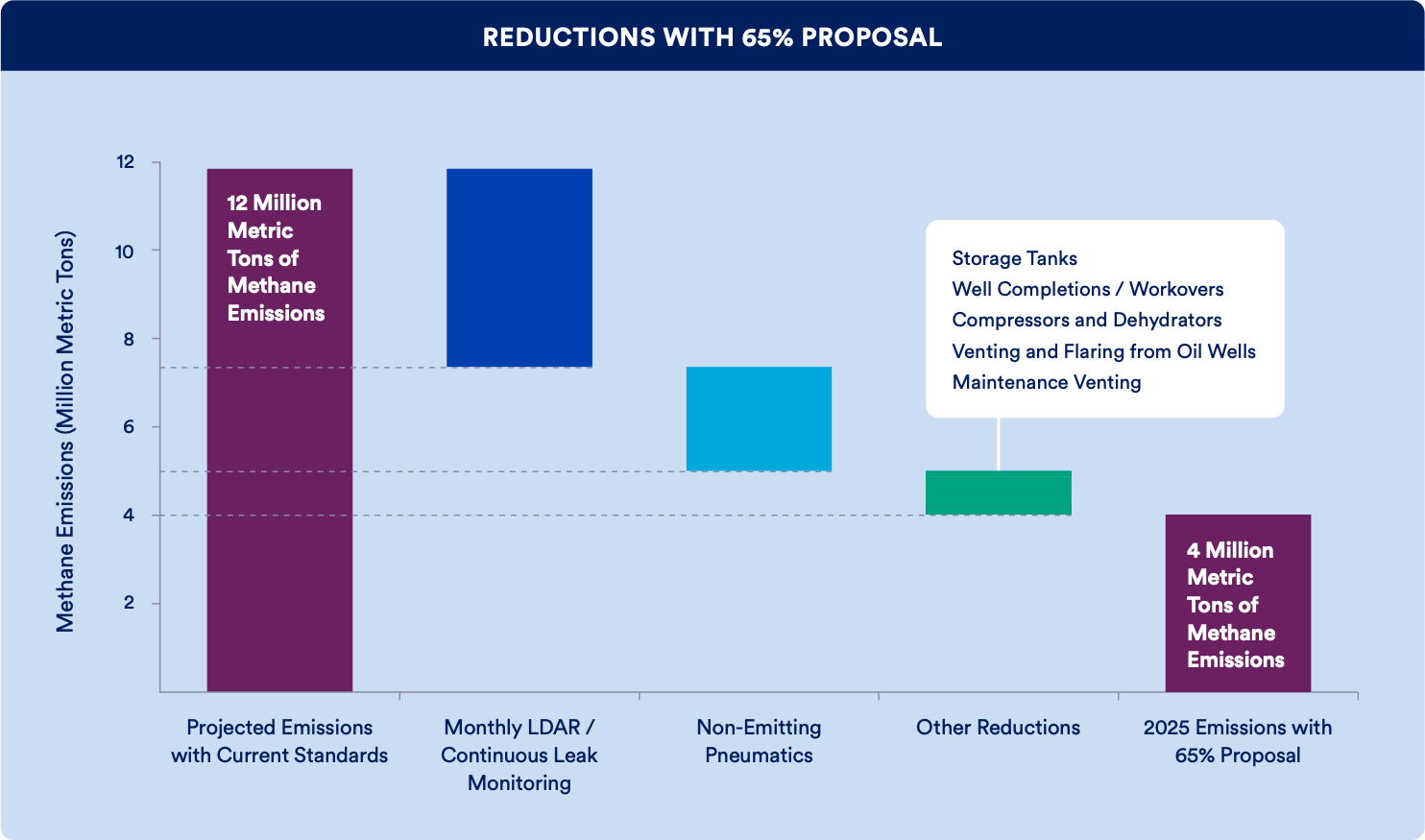The Environmental Protection Agency can quickly reduce oil & gas methane emissions 65% by 2025, or almost eight million tons of methane a year by taking the measures described below. Methane emissions are projected to exceed 12 million metric tons in 2025, causing as much near-term warming as 260 coal-fired power plants. However, if we institute the key regulatory measures below, the near-term climate benefit would be similar to replacing 150 million gasoline cars with cars powered by zero-carbon electricity.
Without federal action, oil and gas pollution will accelerate the climate crisis and continue threatening the health of more than 12.5 million Americans.
Regulatory Measures to Address Sources of Methane from Oil and Gas
Key Measure 1:
Frequent Leak Detection and Repair (LDAR).
Methane emissions from oil and gas production comes from two types of sources: the unintentional — leaking components and super-emitters, and intentional releases. U.S. EPA data suggests that emissions can be cut by about 90% with monthly LDAR. With rapid advancements in technology measures to detect leaks require little investment and that cost will continue to fall.


Key Measure 2:
Replace gas-driven pneumatic equipment.
Outdated gas driven pneumatic equipment is ubiquitous at U.S. oil and gas sites, but they are designed to release gas into the air when operating, and often vent and pollute far more gas than they are designed to. While gas driven equipment was once necessary at off-grid sites without electricity, advancements in technology have made it possible to use pneumatic equipment powered by solar. By replacing this natural gas-driven pneumatic equipment with non-emitting alternatives, we can significantly reduce pollution.
Key Measure 3:
Eliminate routine venting and flaring.
Oil and gas operators still routinely vent gas from wells and storage tanks, taking advantage of exemptions that allow venting of emissions from well completions and workovers. It is estimated that 80% reductions of venting and flaring of associated gas is possible if planning is required to ensure that gas infrastructure keeps pace with well drilling or utilizes alternative approaches to capture avoidable emissions during equipment maintenance and storage processes.


The world’s leading climate scientists have found that we must take immediate, rapid, large-scale action to avoid global warming above 1.5 ℃. Methane, because of its strong yet short lived climate impacts, provides an important opportunity to act in accordance with the most recent IPCC reports findings.
To tackle climate change, we must institute federal safeguards to dramatically cut methane pollution.
To learn more download the full white paper here:
Reducing Methane from Oil and Gas: A Path to a 65% Reduction in Sector Emissions

